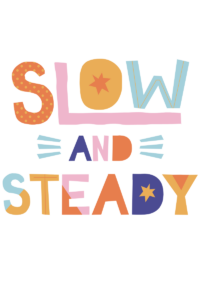Yes, remote or distance learning may be the new norm for a bit.
But even with all the restrictions remote learning has, there are some ways to still make math enjoyable. It can be more than just watch my video and then answer some questions. We can make math engaging even in the online space.
One way to get out of the “I do, now you do” rut is by utilizing Zoom or Google Meets breakout rooms features to play math games. So if you haven’t explored how to get collaborative games going virtually, what are you waiting for? Here are some ideas and links to games you can try out in break out rooms. Have fun!!!
Digital Escape Rooms that have a math aspect https://www.simplemost.com/
Save Sports Math Digital Escape Room https://mamateaches.com/
Another website that offer math games can also be used in break out rooms https://www.mindgames.com/
Math Bingo http://www.
Math Simon Says-Simon Says is one of those classic games kids still love today as much as we did when we were young. Give it a math twist. Use physical movements you have taught for math vocabulary. For example, say “Simon Says show a line” and kids hold out both arms with hands extended.
3D shape scavenger hunt– call out a shape and have students go find a real-world example. The first one back or the first five back, get a point.
20 Questions Math Edition – Using a list of vocab words from the unit, have students take turns picking a word while the rest of their group takes turns asking yes or no questions up to 20 as they attempt to guess the math term. If the group manages to guess the object within the 20-question limit, you lose. If the other players cannot guess the object by the end of the 20 questions you get a point.
The next person then adds, multiplies, divides, or subtracts that number in order to get closer to the original number that you decided upon. This goes on until you reach the last person in your group and the goal is to reach your original number by this time using all the calculations.
You can either make it harder for the last person to win or help them depending on your liking. Keep in mind that the last member of your group will be the first one in the next round and will most likely decide on the next random number so it is probably a good idea to help them along the way.
Fizz Buzz – It’s a cross between a counting game and a times table game, and it has the merit of being collaborative rather than competitive. Here’s how it works: You agree on two numbers to be called ‘fizz’ and ‘buzz’. Traditionally, ‘fizz’ is 3 and ‘buzz’ is 5, but it’s ok to change them, especially if there are three or five players.
The first player starts by saying ‘1’. The second says – you’ve guessed it – ‘2’.
The next says ‘fizz’, because the number they would normally have said (‘3’) is a multiple of 3, and has a 3 in it!
It carries on: 4, buzz (5 is a multiple of 5), fizz, 7, 8, fizz, buzz, 11, fizz, fizz (13 has a three in it), 14, fizz buzz (15 is a multiple of 3 and 5), and so on.
If anyone says a number when they should have fizzed or buzzed, you have to start again from zero. How high can you get? You can play between each person or between each ‘team’ of people taking part on screen.
Want to check out more?
MEMBERSHIP SITE:
https://zennedmath.com/online-courses/
FACEBOOK GROUP: Zenned Math Teachers
https://www.facebook.com/groups/zennedmathteachers/
YOUTUBE CHANNEL: Zenned Math
https://www.youtube.com/channel/UC5njH_5LoK6G67BvZecGfnw?
WANT ME IN YOUR INBOX? Sign up for my newsletter
https://view.flodesk.com/pages/5efc876dcaabca0028b95eb5
DISCLAIMER: Some links included in this blog might be affiliate links. If you purchase a product or service with the links that I provide, I may receive a small commission. There is no additional charge to you!

